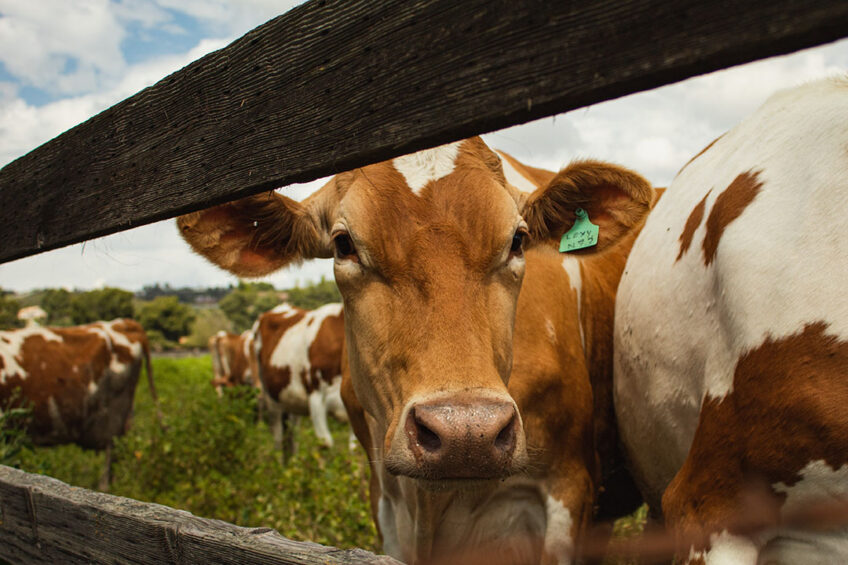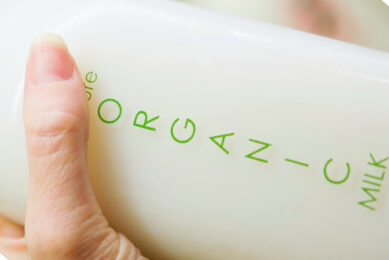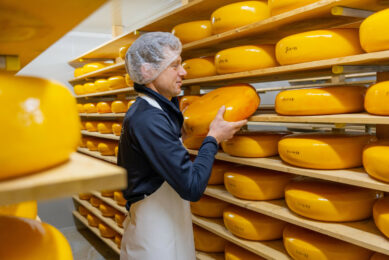EU’s organic target a challenge for dairy sector

One of the ambitions of the EU Farm to Fork strategy is to increase the share of organic agriculture to 25% by 2030. There are major obstacles to overcome, particularly in the dairy sector where only 4% of the current dairy herd is organic.
The organic dairy sector has seen growth over the past 2 decades, but its continued growth requires support from farmers and dairy companies to retailers and consumers.
According to an ING Economic and Financial Analysis report, major dairy companies have yet to embrace the organic target. Proposed policy measures in the Farm to Fork strategy tend to focus on developing supply, which implies that it is primarily up to dairy companies and retailers to stimulate demand for organic products. This, however, only works if consumers are willing to pay a premium or if the EU compensates dairy farmers for their additional efforts, says ING. According to a BEUC (European consumer organisation) survey, only 1 in 5 EU consumers is currently willing to spend more on sustainable food.

Furthermore, dairy processing plants could be left underutilised should an increase in organic dairy farming put pressure on milk volumes and lead to a higher cost price, and companies that rely on exports and dairy commodities will face challenges that will cause them to run into additional costs.
Main obstacles faced by the dairy sector
The ING highlights 4 major obstacles on the road ahead for the dairy sector. These will ultimately determine if the Farm 2 Fork targets will be successful:
- EU and dairy sector support: There are widespread concerns over farm income, competitiveness and food security relating to the F2F strategy. Within the dairy sector, specifically, the organic target has also received mixed support because it could offset earlier progress on lowering CO2 emissions and land use.
- Policy measures: Changing food systems requires the integral support of numerous departments (e.g., agriculture, health and the environment) and an interlinked set of measures at the national and European level. Difficulties arise in redirecting EU funds from conventional farming practises towards those which are more linked to sustainability.
- Transition costs and risks: Costs and risks related to transitioning are a major hurdle for many farmers, and the bill for their efforts must be paid by someone.
- Consumer awareness and willingness to pay a premium: Continued efforts are needed to ensure consumers value sustainability-related efforts in agriculture. Furthermore, demand is limited for organic dairy in the export and commodity markets where many dairy companies are earning a large share of their revenue. Furthermore, retailers acknowledge the need for greening their supply chains but are also wary of losing price-sensitive customers to competitors.
Figure 1 – Share of organic dairy cows in the top 10 dairy producing countries in the EU in 2019. Source: Eurostat, ING Research.

The biggest economic impact
The policy proposal that likely has the biggest economic impact is the target to use at least 25% of total EU farmland for organic farming by 2030. This will involve commitment from every stakeholder in the value chain. It seems highly unlikely that there will be a specific target for dairy farming, however, the dairy sector is an important agricultural land user for grazing livestock and the production of feed crops. The sector will have to think about how it can contribute, notes the ING report.
Figure 2 – Percentage of organic dairy cows in total dairy herd. Source: Eurostat, ING Research.

A changing dairy landscape
EU projections show a slight decrease in the dairy herd this decade. However, assuming a 25% share for organic in the dairy herd means the number of organic dairy cows would have to multiply by almost 6 to around 4 million in 2030. ING estimates that more than 100,000 dairy farmers would have to convert from conventional to organic farming in such a scenario.
Once converted, the financial perspective can become more attractive because organic milk trades at a premium. In Germany and Austria, this was on average 15 cents and 8 cents, respectively, per litre in the last 5 years. Farmers need to bear in mind if this premium is enough to compensate for lower milk production on organic farms (typically more than 20% lower).
Join 13,000+ subscribers
Subscribe to our newsletter to stay updated about all the need-to-know content in the dairy sector, two times a week.










